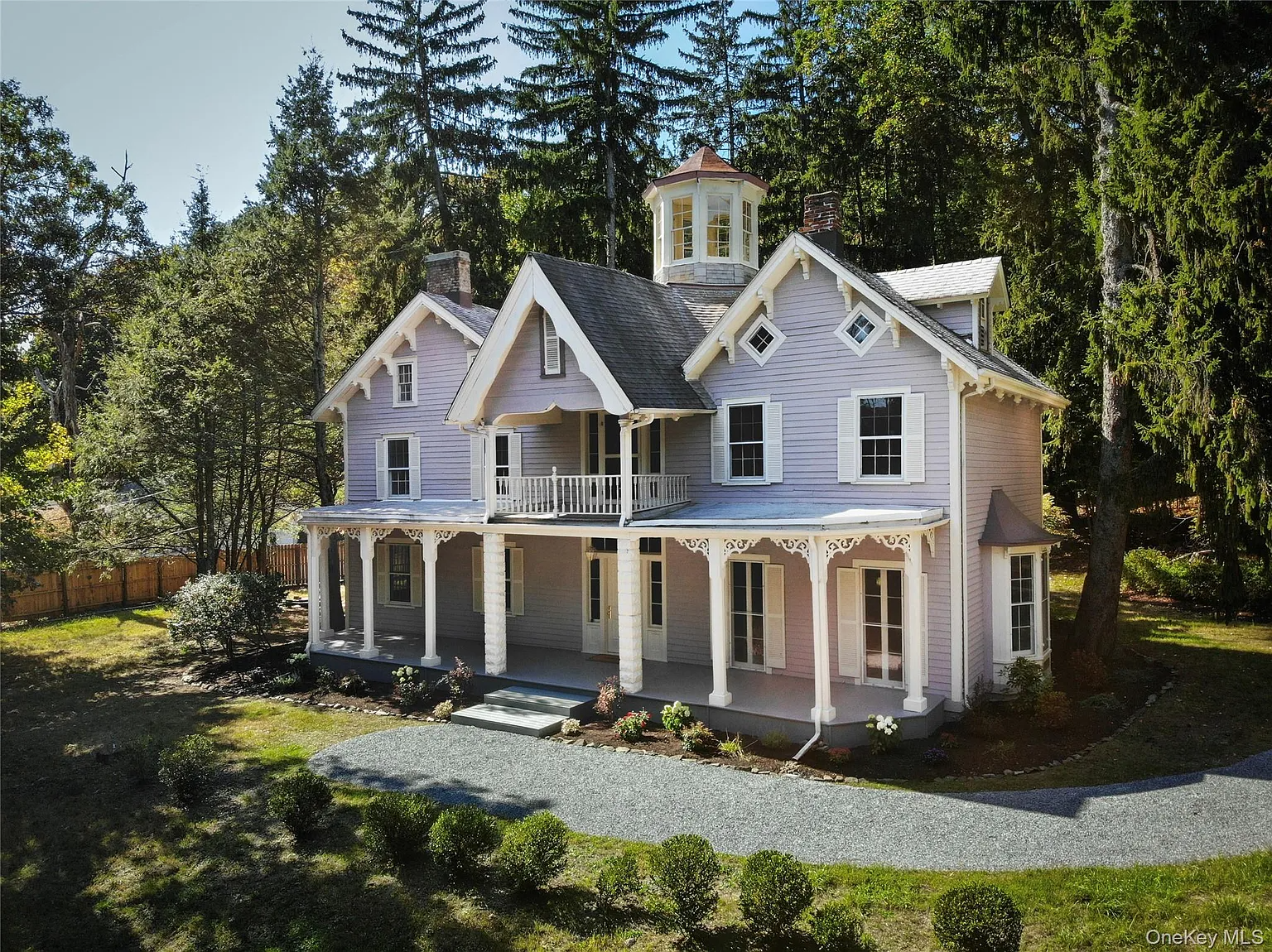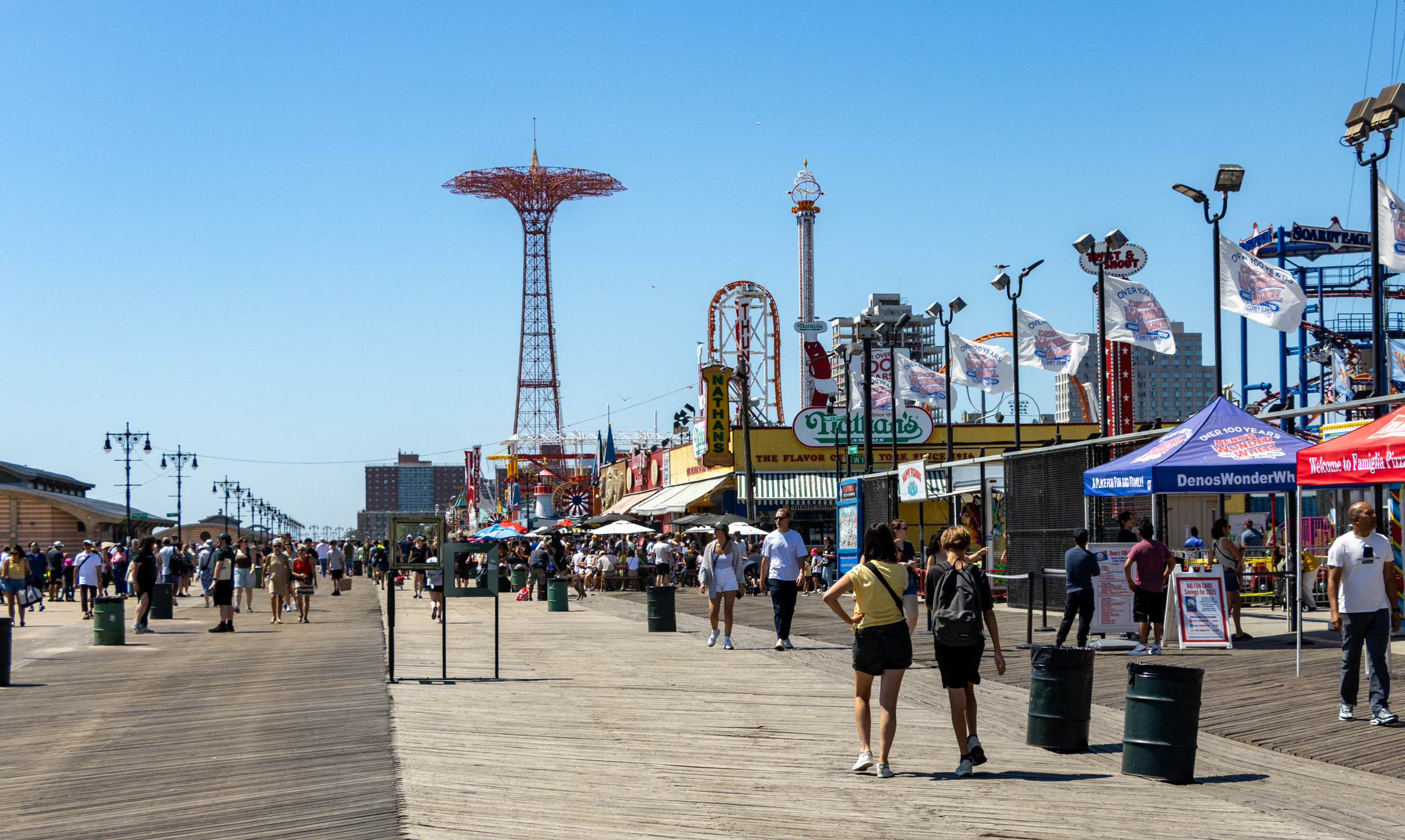Hope for The Hole? Eric Adams Promises Sewers and Redevelopment as Parting Gift
The flood-prone zone straddling the Brooklyn-Queens border gets a plan to reduce flooding and end reliance on septic tanks.

Mayor Eric Adams speaks in The Hole about making infrastructure updates to the flood-prone neighborhood, October 21, 2025. Photo by Benny Polatseck/Mayoral Photography Office
by Samantha Maldonado
This article was originally published on October 21 5:31 p.m. EDT by THE CITY
New sewers. New drainage. New green space. And up to 5,000 new apartments.
Those elements could fill The Hole, a low-lying and long-neglected neighborhood on the border of Queens and Brooklyn that will be the target of a proposed rezoning, Mayor Eric Adams announced Tuesday.
Residents of The Hole — otherwise known as the Jewel Streets area for avenues named after amber and sapphire — have suffered from flooding even on sunny days and are not connected to the city sewer system. They’ve navigated standing puddles of water and relied on septic tanks, which can leak.
As part of the neighborhood plan, which came about through a multi-year process, the area will get a new drainage system, including sewers.
“We are going to be redoing the entire underground infrastructure for this entire neighborhood,” said Department of Environmental Protection Commissioner Rohit Aggarwala. “No more septic tanks. We’re not gonna do that any more. Everyone will be able to connect to the sewer system.”
The city plans to raise streets by as much as 10 feet in certain areas and will build a pump station to carry sanitary waste into the sewer system. Plus, to mitigate flooding, the city plans to construct multiple bluebelts, which will use nature to channel rainwater into Spring Creek.
In anticipation of more intense rainfall as a result of climate change, the sewer system will be designed to handle about a third more rainwater than sewers in most neighborhoods around the boroughs.
The rezoning proposal could also result in as many as 5,000 new homes in the neighborhood, mostly along Linden Boulevard and residential blocks alongside it, including in the Jewel streets. Up to 1,400 of those homes would be on city-owned land located just south of The Hole.

The city is collecting information from homeowners who are interested in their properties being bought out and intends to use the vacated lots to address needs connected to the area’s redevelopment. For instance, a property might become the site of a bluebelt, a pump station, or flood-resilient housing.
The city promised that property owners who decide to stay will get help to retrofit their homes to become more flood resilient, but details are scarce.
Adams, for his part, touted an expected rise in property values and panned the option to take a buyout.
“I would encourage them not to do so. You’ve invested your time here, you’ve invested your dedication,” he said. “You’ve made your investments here. If you want to stay, stay.”
Many specifics must come to light before elected officials and residents will be ready to get on board.
Homeowner Julisa Rodriguez, for instance, submitted an interest form to the city for a possible buyout, but said she wants to keep her options open given the planned transformation of her neighborhood. She wants more information from the city before she chooses.
“They still haven’t formulated a thorough explanation as to both plans,” she said. “In order for me to decide, I would need a breakdown of everything.”
In a statement, Council Member Joann Ariola, who represents the Queens part of The Hole, called the announcement of the rezoning “premature.”
“The local community boards still haven’t seen the presentation, and electeds have only gotten a short briefing without the full details,” she said. “We need to make sure the details are things that the community there actually wants, not major changes that will disrupt their lives and upend the neighborhood.”
Council Member Chris Banks, whose Brooklyn district encompasses the other part of The Hole, said he is excited by the progress made to address community priorities.
“My office and I have been leading partners in ensuring that the voices of all community stakeholders have been reflected at every step of this process leading up to today’s announcement,” Banks said in a statement. “I will continue to make sure those voices are heard as this project becomes reality.”
In the meantime, community organizers will connect city officials and locals, who have taken matters into their own hands to deal with flooding and navigate bumpy streets amid unmet promises for new sewers and streets dating as far back as 2002.
“We’ll be fiercely advocating for this plan and implementation and making sure there’s no further delays,” said Meredith McNair, a senior community planner at Cypress Hills Local Development Corporation.
The rezoning process is scheduled to begin in 2026, and by then Adams, who is no longer running for reelection, will not be in office. Ultimately, the next administration could abandon the rezoning effort. But Adams said the work done already would give the next mayoral administration “a good head start.”
Related Stories
- They Live Below Sea Level in NYC. Now, the City Could Buy Out ‘The Hole’
- Atlantic Avenue Rezoning, Set to Bring Thousands of Homes, Passes City Council
- Mayoral Appointees Propose Scrapping Public Review for Some Rezonings
Email tips@brownstoner.com with further comments, questions or tips. Follow Brownstoner on X and Instagram, and like us on Facebook.





What's Your Take? Leave a Comment